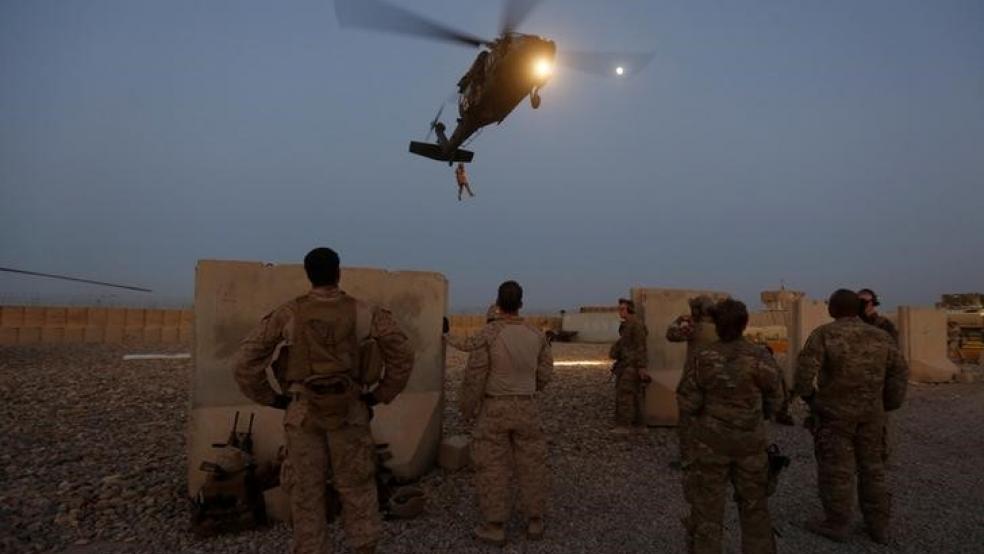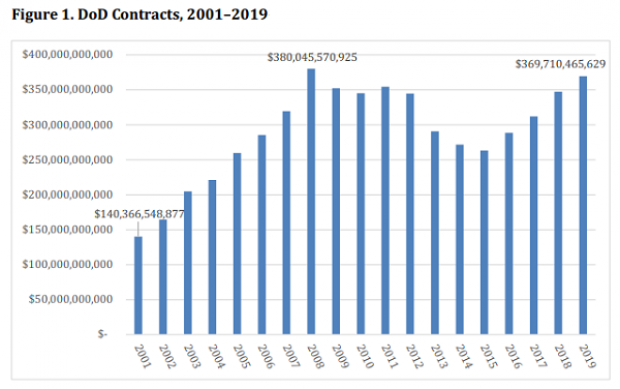Since the 9/11 terror attacks, the Pentagon has relied on private contractors to handle a huge array of tasks, ranging from laundry and dining services to transportation and security at military bases overseas. Conservative think tanks and some lawmakers have long encouraged the arrangement, touting the efficiency and cost-savings theoretically associated with private enterprise, but critics have charged that military contractors are models of waste and bloat. A new study from the Costs of War project at Brown University comes down firmly in the latter camp, arguing that contractors in what it calls the “camo economy” have led to a surge in spending, while systematically hiding the true costs of the nation’s war-fighting efforts.
According to the report from the Watson Institute for International and Public Affairs at Brown, more than half of last year’s defense budget was spent on contractors. The $370 billion total in 2019 rivals the peak level seen at the height of the “Global War on Terror” in 2008, when the Pentagon spent about $380 billion. And annual spending on contractors is more than twice as high as it was in 2001, before the 9/11 attacks.
Those contracts pay for services and personnel that cost more than they would if the Department of Defense simply did them itself, the report claims, due in large part to a lack of competition. Nearly half of all Pentagon contracts were classified as “non-competitive” in 2019, the report says, and even some supposedly competitive contracts were written on a “cost-type” basis, which provides no incentives to keep costs low.
“Between 2008 and 2019, the Department of Defense (DoD) spent over $1.2 trillion on such cost-type contracts, none of which were subject to the cost-reducing pressures of private markets,” the report says. “Other contracts include lifetime service agreements and sole-supplier contracts, which effectively create monopolies.”
The use of contractors also helps hide the full human cost of the war. There were 35,000 U.S. troops in the Middle East in 2019, but also 52,000 contractors -- and together those figures produce a higher total than is oftentimes discussed in the media. Similarly, about 7,000 U.S. soldiers have died in Afghanistan since 2001, but 8,000 contractors have died as well, more than doubling the gruesome tally. “By hiding the full human cost, military contracting makes war more politically acceptable and less publicly opposed,” the report says.
For more details, see the Watson Institute report here, and an analysis by The Washington Post here.





